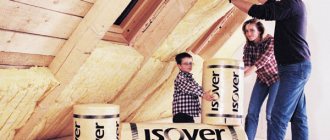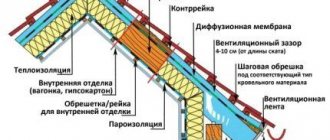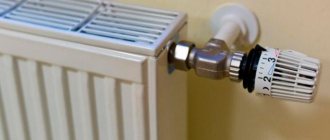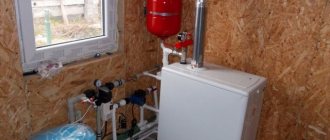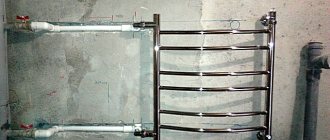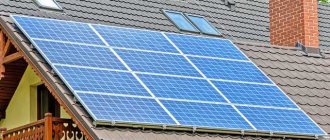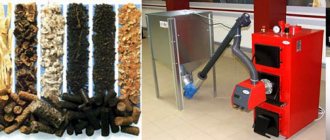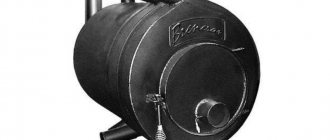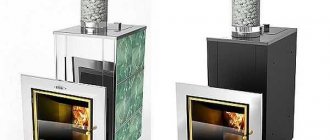Increasing the thermal protection of a private house during construction is an important stage of work, while significant volumes are insulated, and the cost of thermal insulation materials becomes the decisive factor. One of the popular inexpensive types of heat insulators is Izover insulation, the technical characteristics of which are excellent for use in individual housing construction.
It should be noted that Isover is a modern, more technologically advanced version of classic glass wool, which was widely used during the Soviet period for thermal insulation of utility pipelines for heating and hot water supply systems. Isover is produced in several modifications depending on the purpose; each brand in the series has different parameters and differs in installation methods. Knowledge of the characteristics and varieties of Izover will help you choose the right product without overpayments, install it in compliance with the technological process, which is the main requirement when installing any type of insulation.
Izover - appearance
Let's take a quick look at the history and facts
The Isover brand is owned by a French company with headquarters in Paris. The company was founded back in 1665 by order of the French King Louis XIV. By the way, it is noteworthy that at that time the company was engaged in the manufacture of mirrors and glass. And the brand name “Isover” uses two words “insulation” and “glass”. Today in Russia the brand has two factories where insulation materials are produced. One makes materials from stone fiber, the other from fiberglass. Isover thermal insulation in Russia was previously sold under the name “Uteplyaev”.
Dimensions
Products are produced in various forms. These can be rolls, whose rigidity has differences and mats. The thickness of the single-layer material is offered at 5-10 centimeters. Each layer of two-layer insulation is 5 centimeters.
Dimensions
The width and length of the slabs usually have standard dimensions of 1 meter by 1 meter, but some manufacturers offer mats with other indicators. Rolled copies are produced in a standard width - 1.2 meters, but have differences in length - from 7 to 14 meters. The total area of one roll\ is produced from 16 to 20 m2.
Purpose
In its line, the manufacturer has several dozen types of materials intended for insulation and sound insulation:
· Floors;
· Sten;
· Facades;
· Bath;
· Partitions;
· And other objects.
The areas of application of these materials are shown schematically below.
Recommendations for working with the material
Carrying out work requires compliance with safety regulations. To minimize the occurrence of traumatic situations, always wear protective clothing, gloves and a respirator.
Considering the installation process, there are practically no differences from the installation of other types of thermal insulation materials.
- Prepare the surface. This stage involves cleaning the installation site from large and small debris.
- Install the frame. If the walls are insulated, then initially it is necessary to assemble the sheathing. In the case of a roof, the rafter system will serve as the frame.
- Maintaining a pitch between the beams of 600 millimeters makes the fit of the insulation to the sheathing as tight as possible. When laying the rolls, leave a small allowance of about 2 centimeters, which will eliminate the need for fastening.
- Products of the same brand can be used as vapor and waterproofing.
- Ventilation gap. In all types of sheathing, installation of a ventilation gap is required. The exception is floor insulation.
Ventilation gap
- Before installing the facing covering, make sure that there is a gap of a couple of centimeters between the insulation and the finishing coating. This will ensure sufficient air exchange.
General characteristics of “Isover” thermal insulation
It is perhaps difficult to pay attention to each area in the line within the framework of one article, so we will summarize the approximate general characteristics of these materials.
Main characteristics of Izover insulation:
- Thermal conductivity: 0.031-0.041 W/m2*K;
- Flammability: from G1 (low-flammable) to NG (non-flammable);
- Vapor permeability: 0.50 – 0.55 mg/mchPa;
- Service life: up to 50 years;
- Air permeability is 120*10-6m3/m×s×Pa;
- Thickness: from 50 millimeters.
These are only average indicators; you should always go to the manufacturer’s official website for the most accurate indicators. Below in the table we provide, as an example, more precise characteristics of lightweight insulation.
For information, we also provide a table of characteristics of Isover mats Classic
Peculiarities
Izover insulation has some features:
- The material has good thermal conductivity. If we consider the Isover product line, the warmest one based on quartz is Isover “Warm Walls”, and among basalt insulation products - Isover “Master of Warm Walls”.
- Soundproofing qualities. The dense weave of fibers prevents noise vibrations from penetrating through the thickness of mineral wool. The main obstacle to the penetration of sound is the air that fills the voids between the fibers.
- Any Isover model is considered completely non-flammable. This feature allows the use of this thermal layer in rooms of any type.
- Vapor permeability. This quality of mineral wool is at a low level. In rooms with high humidity, Isover insulation quickly becomes saturated with moisture, losing some of its thermal insulation qualities. To provide protection to the product, a vapor barrier is initially laid, after which the installation of mineral wool is allowed. The gap between the front trim and the outer layer of insulation provides additional protection.
- Durable. Having installed Izover insulation once, you can forget about re-installation for 50 years or more. The material owes this feature to its structure.
- Environmentally friendly. Scientists have repeatedly conducted studies to identify side effects on human health from insulation, but so far no such effects have been found.
Price
The cost of insulation, especially during a crisis, is a particularly important topic. In this article we will not be able to provide prices for all options, but we will still show the main ones.
For example, the “Sauna” model in a roll 6250 long, 1200 wide and 100 mm thick will cost approximately 1400 rubles.
Isover KL 37, 10 slabs per package, 100 mm thick slabs will also cost about 1,400 rubles.
A pitched roof, 20 slabs, each 100 mm thick, will cost 1,000 rubles.
Here is a screenshot of the cost from a popular online store.
What is isover
Isover is a material that is used to insulate flat surfaces. It is produced by French. The name of the insulation comes from two French words “isolation” - insulation and “verre” - glass. It explains what it is made of. There are two forms of French insulation on the domestic market. There are slabs and rolls. They are formed using fiberglass and basalt wool. Each variety has its own technical characteristics. They determine the scope of use.
The basis of the material is fiberglass and basalt wool. When making slabs or rolls, recycled soda, limestone and sand are added. The use of recycled materials allows us to reduce the cost of the finished product, so French insulation has a very affordable price.
Insulation in the form of plates Source obustroeno.com
The manufacturing technology of isover is extremely simple:
- The listed components of recyclable materials are mixed together, other minerals are added , the mixture is heated to 1300C and converted into a plastic mass similar to liquid glass .
- It is poured into the reservoir . microscopic holes in its walls .
- The container spins like a drum and rotates at high speed . Centrifugal force forces the loaded substance through microscopic holes. In this way, the finest threads are formed .
- The threads are mixed with a special adhesive composition . A viscous mass is formed.
- She goes into the drying oven .
- There the workpiece passes through the rollers . With their help, a layer is formed .
- At the final stage, it is cut into the required sizes . The maximum possible dimensions are 610x1170 mm, the thickness of the slab can vary from 5 to 10 cm.
Installation of thermal protection
Practicality
Due to its shape retention, the material does not change during installation
Firmly attached to the frame or wall, preventing the penetration of cold
Due to its elastic properties, no additional fasteners are required for installation
Thrift
Saving utility costs up to 70%
Does not require much space for transportation as the material compresses well
Safety
Vapor permeability allows the insulation to “breathe”
There is no dust when working with insulation
When heated, it does not evaporate toxic substances
Eco-friendly, does not harm the environment and human health
Fire resistant material
A wide range of uses implies several options for working with Izover materials. There are 4 technological options in total:
- Metal frame structure.
- Wooden building.
- Using staples.
- On the plinth.
When installing thermal protection, seek help from a specialist.
When assembling a thermal insulation complex, the physical properties of the materials should be taken into account. It is worth providing additional protection from moisture using special films. When laying a roofing or wall pie, a certain order of layers should be observed. The vapor barrier is usually pulled from the inside to prevent the formation of condensation. The waterproofing is installed outside to protect against precipitation.
It is very difficult to choose the best of the many varieties of Izover products. Each type has its pros and cons. However, due to the diversity of the assortment and the optimal price-quality ratio, this product is recognized as the most popular.
Disadvantages of mineral wool
If we talk about the disadvantages of Izover mineral wool, it is worth noting the possible content of carcinogenic fractions and the harmfulness of glass dust to the respiratory system. But in order to prevent adverse effects on the body, it is enough to follow simple recommendations during the installation process:
- During installation work, demarcate the residential area and the construction site.
- Use film, plywood or drywall as a fence, which will be a good barrier to the spread of glass dust.
- Prevent the formation of drafts from the installation work area into residential premises.
- Use personal protective equipment - gloves, respirator, helmet, goggles.
Briefly about the manufacturer
As mentioned above, ISOVER is a trademark of the industrial group. The company has a 350-year history , the central office is in Paris. The company has representative offices in 67 countries around the world . In addition to ISOVER, Saint-Gobain produces insulation products of the ISOROC and ISITEC brands.
On the territory of Russia, enterprises are located in Yegoryevsk and Chelyabinsk near Moscow. The products are manufactured using original technology, are subject to mandatory international certification, and comply with GOST standards. It should be noted that since 2013 , enterprises have launched a production line for the production of basalt wool under the brand of the same name.
Insulation service life
The service life of the material is another important parameter, since the price must justify the quality. Insulating a country house may turn out to be a thankless task if you do it every year, but such claims cannot be made against an isover. By insulating the surfaces of a building or room using this unique material, you can not think about insulation for a couple of decades.
Practice has shown (Isover has been used for quite a long time for such examples) that even for half a century, Isover does not lose its thermal insulation characteristics. For example, an isover façade is filled with water repellents that have water-repellent properties. Insects and small rodents do not grow in such material, mold and other fungal microorganisms do not appear.
Key insulation indicators
Isover is an insulation material that is made from fiberglass of the best quality using a special technology. It is in many ways similar in its properties to mineral wool. Available in:
- rigid and semi-rigid slabs;
- rolls and mats.
The latter are used in the arrangement of building facades, ceilings and for roof insulation. The basis for Izover is glass fibers. Their indicators:
- length varies from 100 to 150 microns;
- thickness is 4 to 5 microns.
Due to the above parameters, the insulation is characterized by resistance to various types of loads and elasticity.
Thermal conductivity indicators
The thermal conductivity coefficient is not so high and is only 0.041 watts per meter per Kelvin. Moreover, this value does not change upward over time, as happens with some other heat insulators. Thus, glass fibers are able to conserve heat and retain air.
Sound insulation parameters
Fiberglass material has good performance in terms of protection from external noise. This is due to the fact that there is an air gap between the layers of material. It is she who is responsible for delaying extraneous sounds. Silence in the room where Izover was applied was ensured.
Prone to fire
Any thermal insulation materials whose density reaches 30 kg per cubic meter and are called Isover are classified as non-flammable. This is their definition, in accordance with GOST standards. This insulation can be used in any home, including residential ones. Izover's characteristics allow this to be done. Its use is considered safe both for insulating a one-story cottage and a high-rise building.
Rigid and semi-rigid modifications, equipped with a coating of Tyvek film, fiberglass or aluminum foil, are considered low-flammable. There are some restrictions for such insulation, but there are relatively few of them. Accordingly, they can be used almost everywhere. The main requirement concerns strict compliance with fire safety standards in the building, which form the basis of SNiP.
Vapor permeability of Izover
For most modern thermal insulators, resistance to moisture is the main disadvantage. Most of them cope with their functions, as long as the air in the room is dry. Once it gets wet, even fiberglass can retain heat less well. But Izover is good because it is able to both quickly absorb moisture and quickly release it back.
For this rule to always work and under any conditions, it is necessary to leave a gap between the insulation and the wall, the diameter of which would be at least 2 cm. It is necessary for optimal ventilation. If you forget about this point, then the thermal insulation characteristics of Izover will begin to decrease as moisture accumulates. Its vapor permeability varies from 0.50 to 0.55 mg/mchPa. If the insulation receives 1% moisture, then the thermal insulation performance will drop by 10%.
Duration of service
Isover is an insulation material for which service life is one of the key indicators. Even if it is able to retain heat for a long time, it can last no more than a year. It all depends on the specific product. Insulating a building requires a lot of effort and time. Yes, and this requires a lot of work.
Fortunately, Izover is an exception to the rule. By using it to cover the floor and walls, you can forget for a long time about the need to re-install it. There are examples when it was possible to use a heat insulator for several decades in such a way that all its indicators remained unchanged.
The so-called water repellents included in Izover have water-repellent properties. In addition, insects and other pests do not settle in this insulation, since they simply do not like such a habitat. Even mold does not attack fiberglass insulation.
https://youtube.com/watch?v=PVDsrv-vC-g
Environmental performance and safety
Izover can boast not only of its technical characteristics. Any fiberglass materials of this type are considered harmful to human health. It does not include any toxic compounds. Finnish scientists spent a long time checking the parameters of the material and came to the conclusion that its use, even over a long period of time, does not negatively affect people’s quality of life.
Product weight
Isover is much lighter than other heat insulators. That is why in those structures where the walls are not made of the most durable materials or the excessive load is unacceptable, it becomes a way out.
Scope of application of fiberglass products
“Isover” is considered a universal insulation material, therefore it is suitable for the following work:
- Heat and sound insulation of external wall structures.
- Roof insulation.
- Arrangement of ventilated facades.
- Soundproofing of internal wall partitions.
- Industrial ventilation systems, pipelines.
| The product's name | We recommend using it together with | |||||
| Classic | Classic Stove | Pro | Sauna | vapor barrier | hydro-moisture barrier | |
| Insulation of pitched roofs | fits | fits | we recommend | — | Yes | Yes |
| Insulation of external walls under cladding or brick | fits | we recommend | we recommend | — | Yes | |
| Insulation of walls from the inside | fits | we recommend | we recommend | — | Yes | |
| Insulation of frame walls | fits | we recommend | we recommend | — | Yes | Yes |
| Soundproofing of partitions | fits | we recommend | we recommend | — | ||
| Insulation of attic floors | fits | fits | we recommend | — | Yes | |
| Insulating the ceiling above the basement | fits | fits | we recommend | — | Yes | |
| Soundproofing floors using joists | fits | fits | we recommend | — | ||
| Soundproofing of suspended ceilings | fits | fits | — | — | ||
| Insulation + vapor barrier of internal walls and ceilings | — | — | — | Yes | ||
